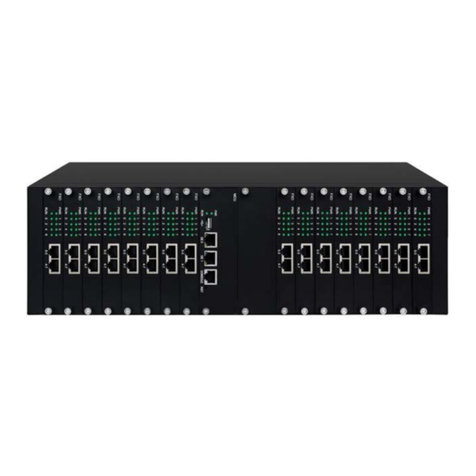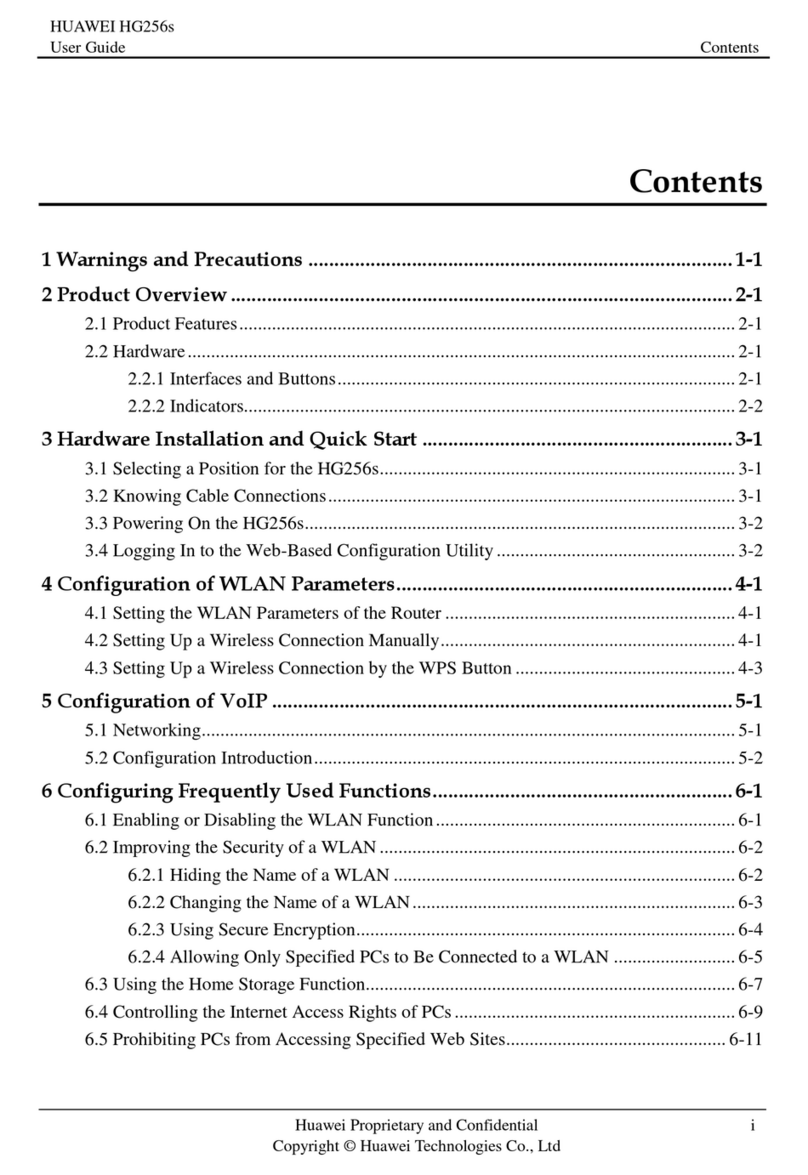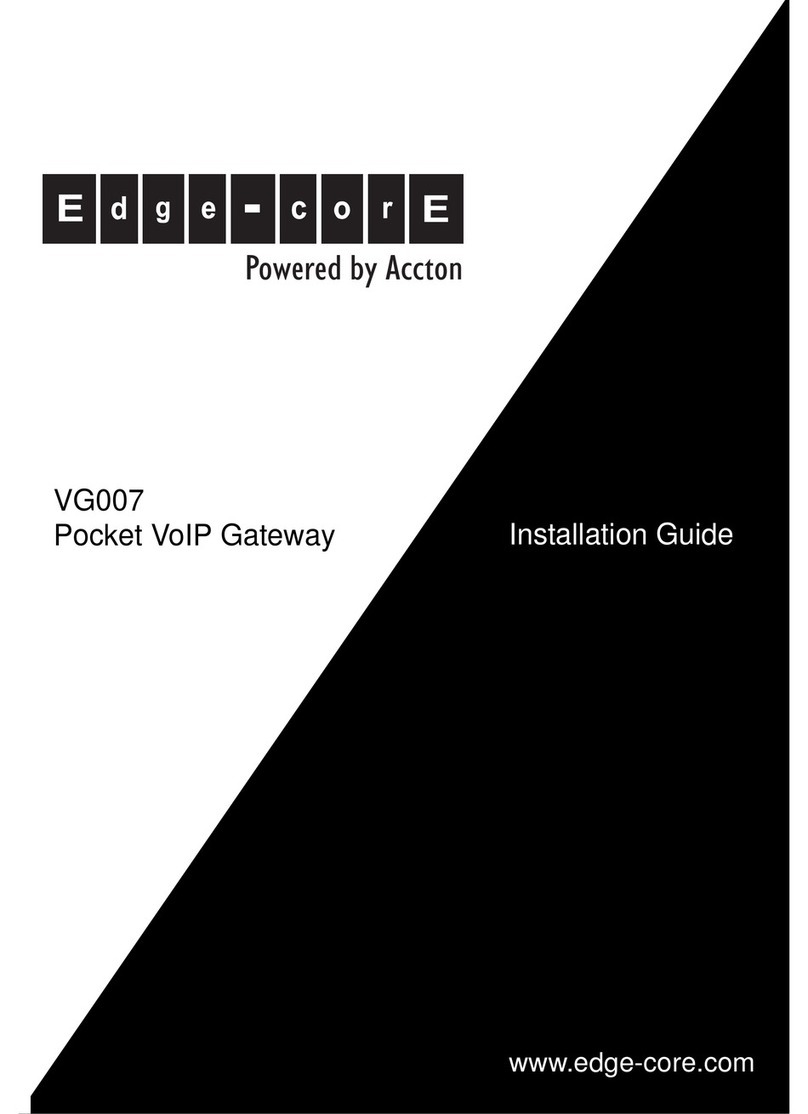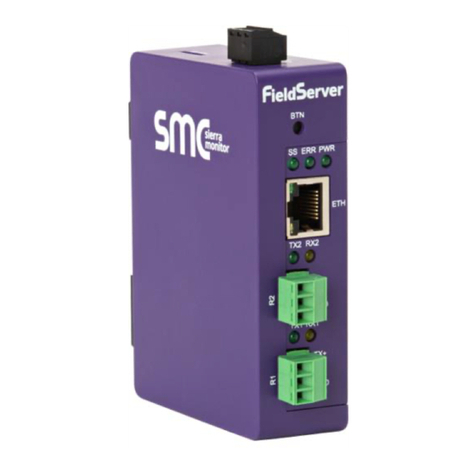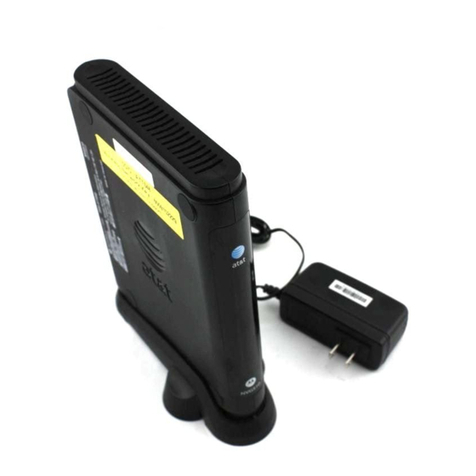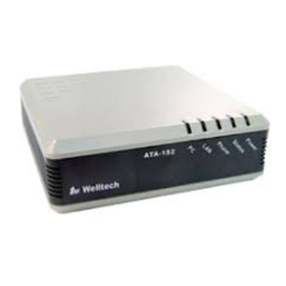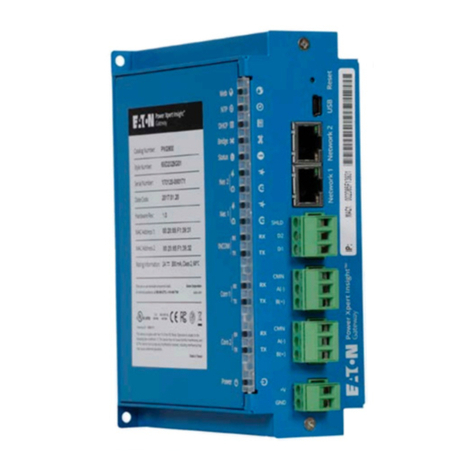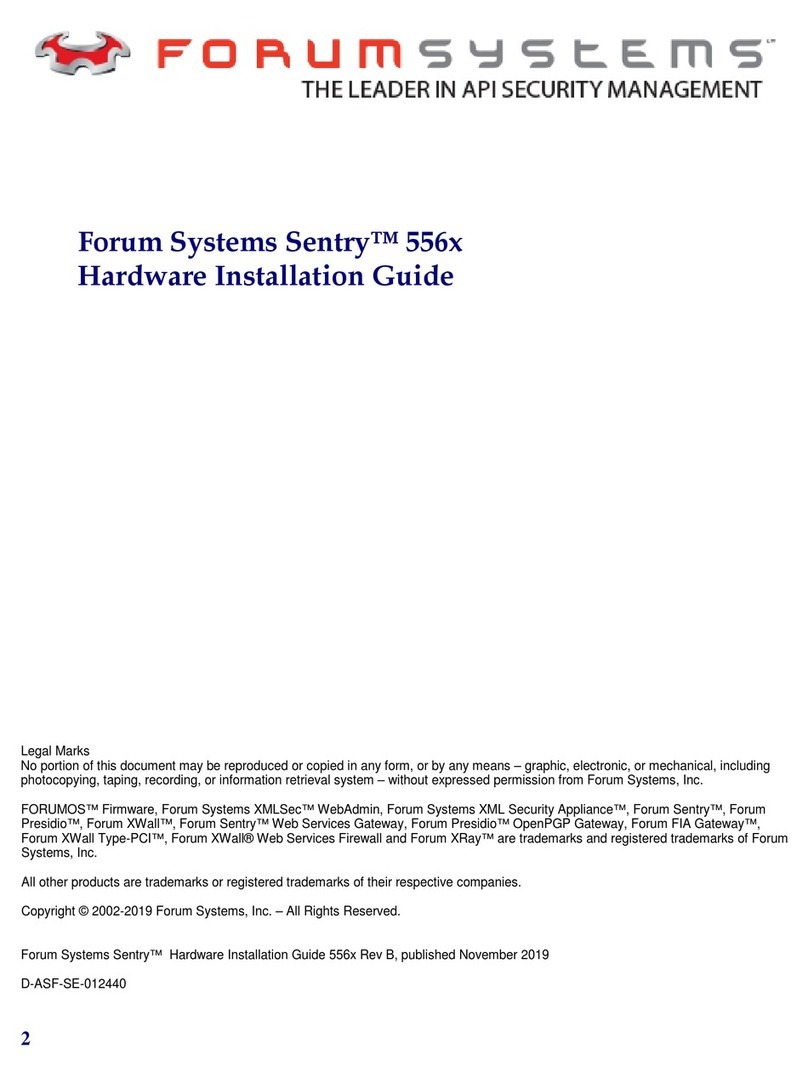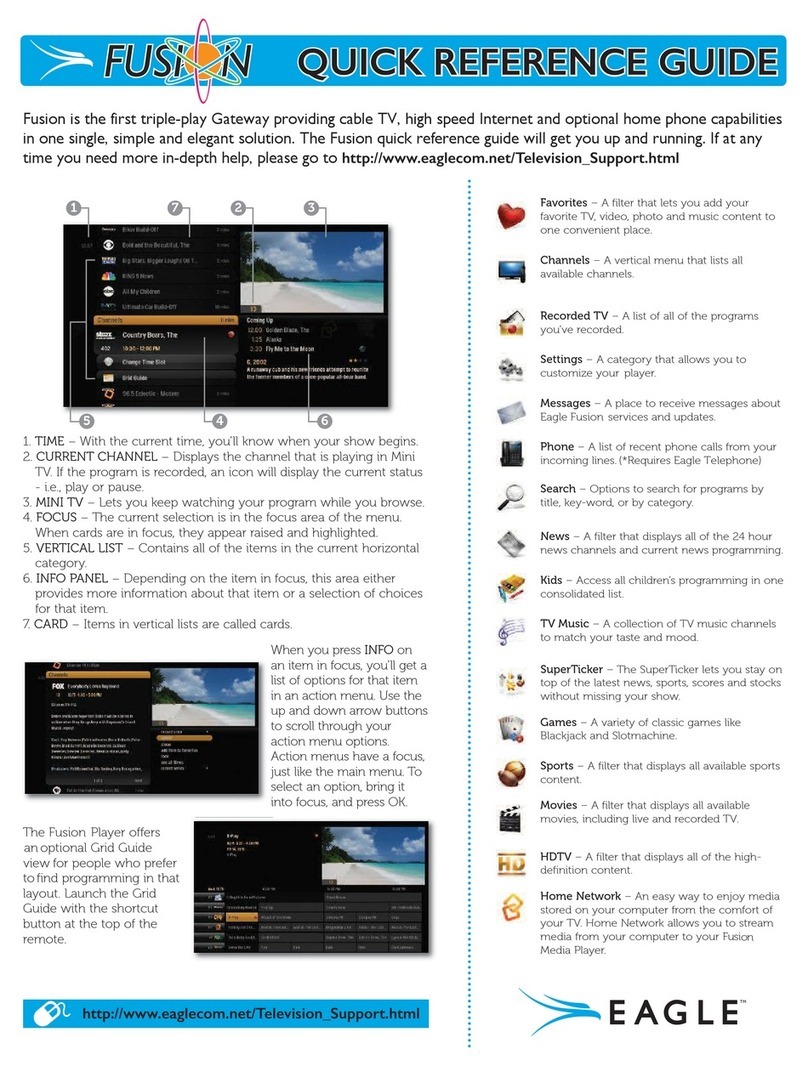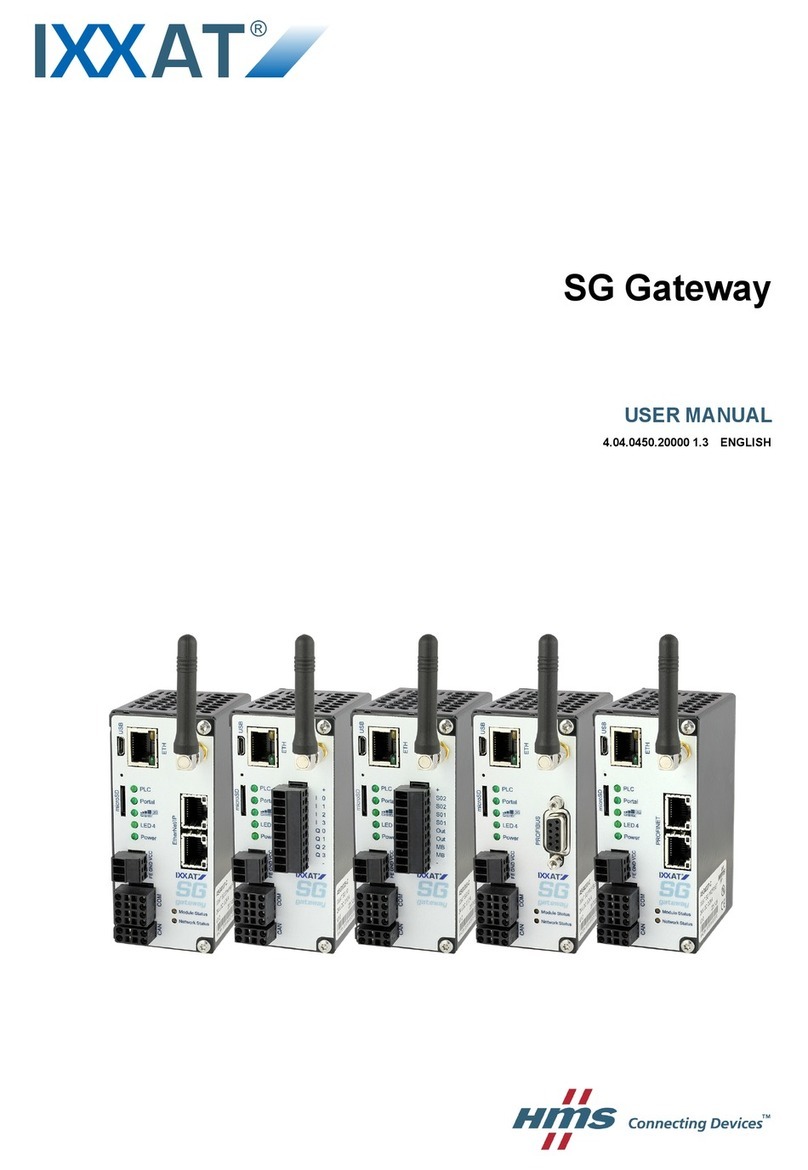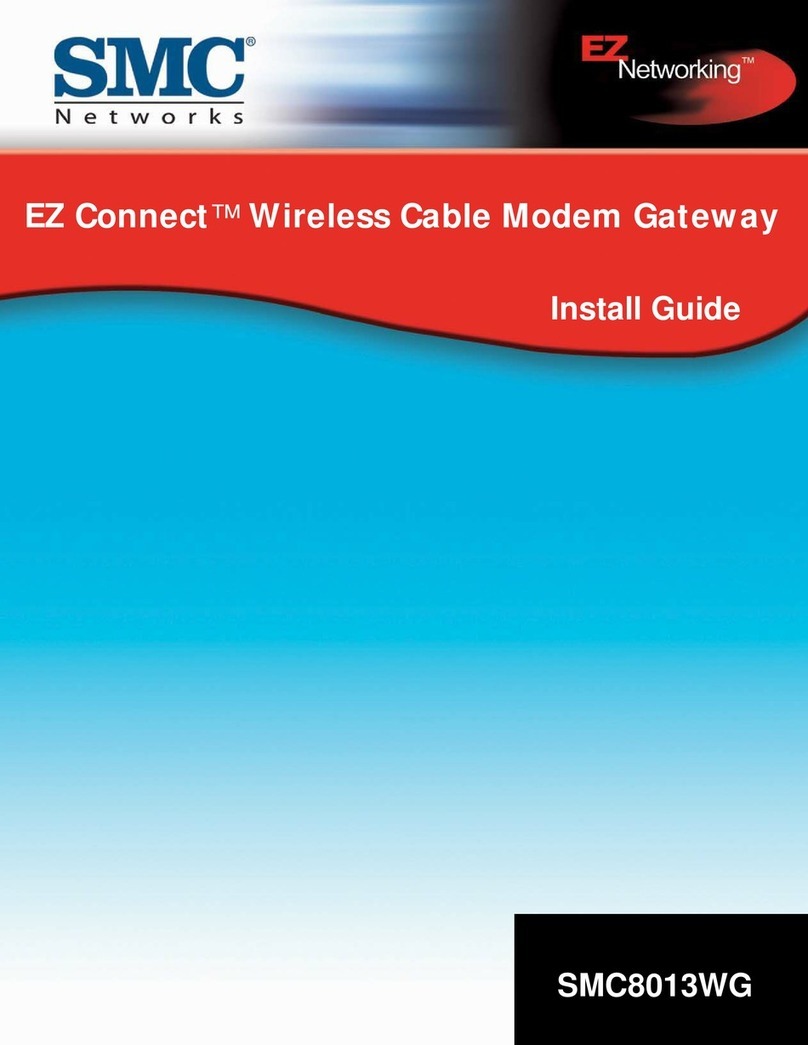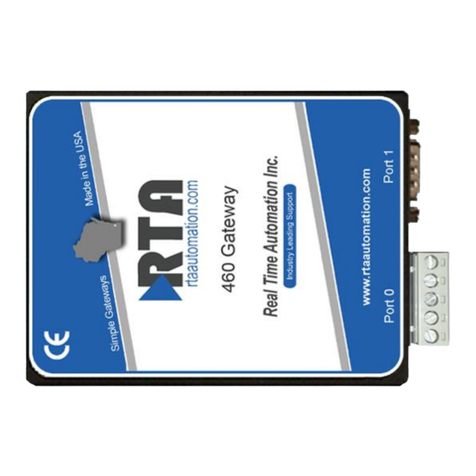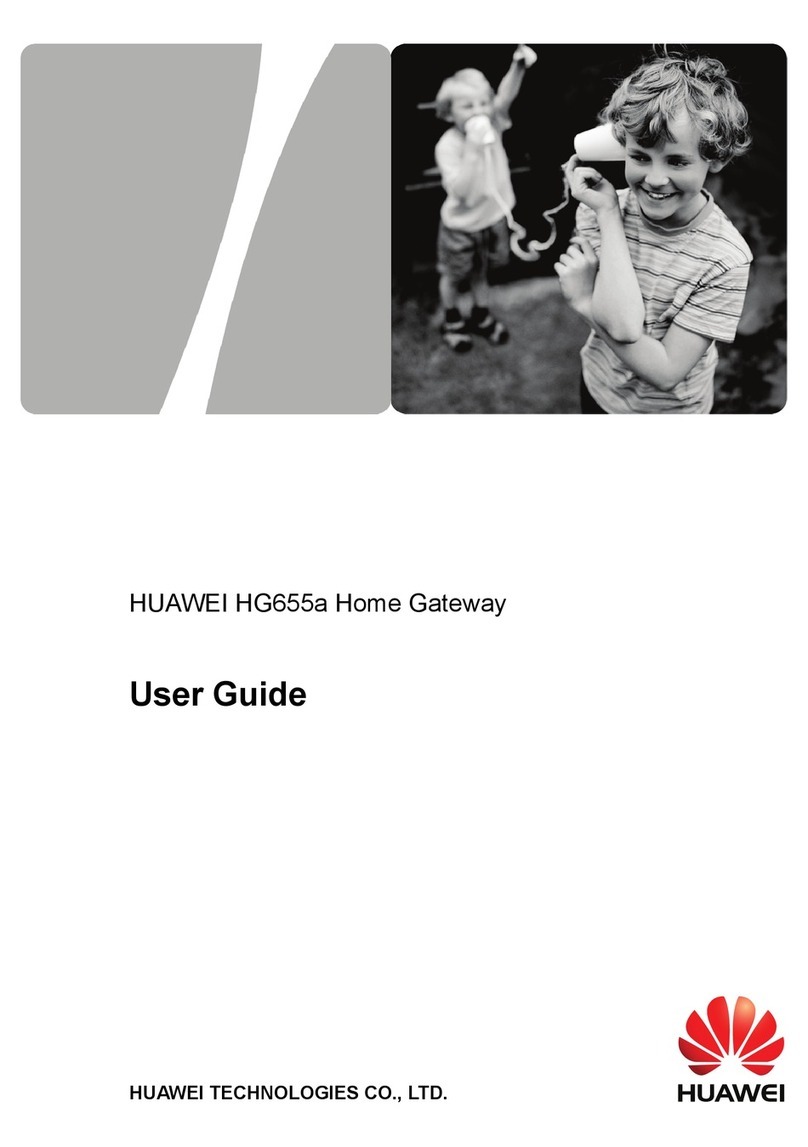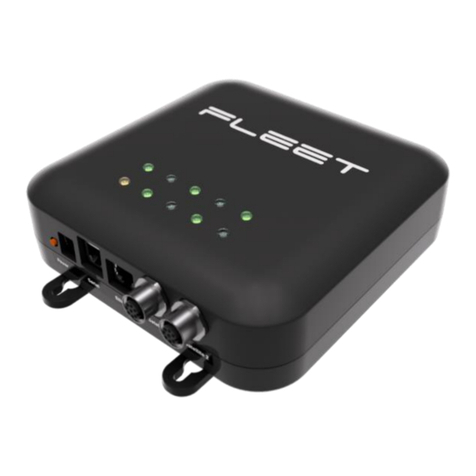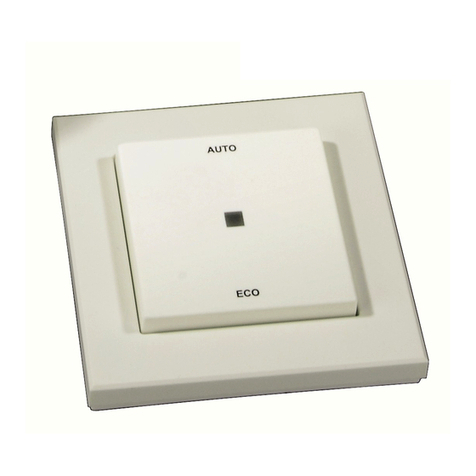Nexo FXS-128s User manual

FXS-128s Analog VoIP Gateway
User Manual v1.0
1

Prefa e
Wel ome
Thanks for choosing the FXS-128s Analog Gateway for VoIP! We hope you will make full
use of this rich-feature FXS Analog VoIP ateway.
Contact us if you need any technical support.
About This Manual
This manual provides information about the introduction of the analog VoIP gateway, and
about how to install, configure or use it. Please read this document carefully before install the
gateway.
Intended Audien e
This manual is aimed primarily at the following people:
lUsers
lEngineers who install, configure and maintain the gateway.
Revision Re ord
Document Name Firmware Version
Document Version
FXS-128s Analog VoIP V1.0
ateway User Manual v1.0
ateway-128s User Manual I

Contents
1
Produ t Introdu tion.......................................................................................................................
1
1
1.1
Overview
..............................................................................................................................
1.2
1.3
Application Scenario
Product Appearance............................................................................................................................
2
1.3.1
Appearance of ateway - 128S................................................................................................................
2
3
1.3.2 Ports and Conector
1.4
1.4.1
1.4. 2
Features & Functions
Key Features
Physical
Interfaces
........................................................................................................................................
4
1 .4. 3
Voice Capabilities & Fax
............................................................................................................................................
FXS
.
.....................................................................................................................................................
4
1.4.4
1.4.5
VoIP.
.......................................................................................................................................................
5
1.4.6
Software Features.....................................................................................................................................
5
1.4.7
Supplementary Services............................................................................................................................
6
1.4.8
Environmental...........................................................................................................................................
6
1.4.9
Maintenance..............................................................................................................................................
7
2
Qui k Installation............................................................................................................................
8
2.1
Installation Attentions........................................................................................................................................
8
2.2
RJ45 Wire Sequence..........................................................................................................................................
8
2.3
Installation Steps................................................................................................................................................
9
3
Basi Operation..............................................................................................................................
11
3.1
Methods to Number Dialing.............................................................................................................................
11
3.2
Direct IP Calls..................................................................................................................................................
11
3.3
Call Holding.....................................................................................................................................................
12
3.4
Call Waiting......................................................................................................................................................
12
3.5
Call Transfer.....................................................................................................................................................
12
3.5.1
Blind Transfer.........................................................................................................................................
12
3.5.2
Attended Transfer...................................................................................................................................
13
3.6
Three-way Calling............................................................................................................................................
13
3.7
Description of Feature Code............................................................................................................................
14
3.8
Send or Receive Fax........................................................................................................................................
16
3.8.1
Fax Mode Supported...............................................................................................................................
16
3.8.2
Explanation of T.38 and Pass-through....................................................................................................
16
4
Configurations on Web Interfa e.................................................................................................
17
ateway-128s User Manual III

Contents
4.1
Preparations for Login.....................................................................................................................................
17
4.1.1
Network Connection...............................................................................................................................
17
4.1.2
Log In Web Interface..............................................................................................................................
18
4.2
Navigation Tree................................................................................................................................................
18
4.3
Status & Statistics............................................................................................................................................
19
4.3.1
System Information.................................................................................................................................
19
4.3.2
Port Status...............................................................................................................................................
22
4.3.3
Current Call.............................................................................................................................................
23
4.3.4
RTP Session............................................................................................................................................
23
4.3.5
CDR........................................................................................................................................................
23
4.3.6
Record Statistics.....................................................................................................................................
24
4.4
Quick Setup Wizard.........................................................................................................................................
24
4.5
Network............................................................................................................................................................
25
4.5.1
Local Network........................................................................................................................................
25
4.5.2
VLAN
(
Virtual Local Area Network
)
.................................................................................................
26
4.5.3
DHCP Option..........................................................................................................................................
27
4.5.4
QoS.........................................................................................................................................................
28
4.5.5
ARP.........................................................................................................................................................
28
4.5.6
IPv6 Network..........................................................................................................................................
28
4.6
SIP Server.........................................................................................................................................................
29
4.7
IP Profile..........................................................................................................................................................
31
4.8
Tel Profile.........................................................................................................................................................
33
4.9
Port...................................................................................................................................................................
34
4.10
Advanced.......................................................................................................................................................
36
4.10.1
Line Parameter......................................................................................................................................
36
4.10.2
FXS Parameter......................................................................................................................................
38
4.10.3
Media Parameter...................................................................................................................................
40
4.10.4
Service Parameter.................................................................................................................................
41
4.10.5
SIP Compatibility..................................................................................................................................
46
4.10.6
NAT Parameter.....................................................................................................................................
50
4.10.7
Speed dial..............................................................................................................................................
50
4.10.8
Feature Code.........................................................................................................................................
51
4.10.9
System Parameter.................................................................................................................................
53
4.11
Call & Routing...............................................................................................................................................
55
4.11.1
Port roup.............................................................................................................................................
55
4.11.2
IP Trunk................................................................................................................................................
57
4.11.3
Routing Parameter................................................................................................................................
57
4.11.4
IP
Tel Routing..................................................................................................................................
58
ateway-128s User Manual IV

Contents
4.11.5 Tel IP/Tel Routing ........................................................................................................................59
4.12 Manipulation ..................................................................................................................................................60
4.12.1 IP Tel Called .................................................................................................................................60
4.12.2 Tel IP/Tel Caller ...........................................................................................................................61
4.12.3 Tel IP/Tel Called ..........................................................................................................................62
4.13 Management ...................................................................................................................................................64
4.13.1 TR069 ...................................................................................................................................................64
4.13.2 SNMP ...................................................................................................................................................65
4.13.3 Syslog ...................................................................................................................................................68
4.13.4 Provision ...............................................................................................................................................69
4.13.5 Cloud server ..........................................................................................................................................69
4.13.6 User Manage .........................................................................................................................................70
4.13.7 Remote Server ......................................................................................................................................70
4.13.8 Record Parameter .................................................................................................................................71
4.13.9 Radius Parameter ..................................................................................................................................71
4.13.10 Action URL ........................................................................................................................................72
4.13.11 SIP PNP ..............................................................................................................................................73
4.13.12 NMS Configuration ............................................................................................................................73
4.14 Security ..........................................................................................................................................................74
4.14.1 WEB ACL ............................................................................................................................................74
4.14.2 Telnet ACL ...........................................................................................................................................74
4.14.3 Passwords .............................................................................................................................................75
4.15 Tools ..............................................................................................................................................................76
4.15.1 Firmware Upload ..................................................................................................................................76
4.15.2 Data Backup .........................................................................................................................................76
4.15.3 Data Restore .........................................................................................................................................77
4.15.4 Outward Test ........................................................................................................................................77
4.15.5 Ping Test ...............................................................................................................................................77
4.15.6 Tracert Test ...........................................................................................................................................78
4.15.7 Network Capture ..................................................................................................................................79
4.15.8 Factory Reset ........................................................................................................................................81
4.15.9 Device Restart ......................................................................................................................................81
5 Glossary ..........................................................................................................................................83
ateway-128s User Manual V

1 Product Introduction
1 Produ t Introdu tion
1.1 Overview
FXS W is a multi-functional analog gateway offering seamless connectivity between IP-
based telephony networks and legacy telephones (POTS), fax machines and PBX systems. It
adopts modularized hardware design that allows to expand FXS ports by adding boards
according to user's requirements. Each board has 8 FXS ports and the gateway supports 128
FXS ports at maximum.
FXS W supports the standard SIP protocol and it's compatible with leading IMS/N N
platforms and SIP-based IP telephony systems. It is ideally suited for small and medium
businesses, call centers and multi-location environments that need VoIP services.
1.2 Application Scenario
The general application scenarios of FXS W-128S for enterprises are as follows:
ateway-128s User Manual 1

1 Product Introduction
The general application scenarios of FXS W-128S for carrier are as follows:
1.3 Product Appearance
1.3.1 Appearance of FXS GW-128S
Front View:
Back View:
ateway-128s User Manual 2

1 Product Introduction
1.3.2 Ports and Connector
The description of interfaces of FXS W-128S
Port Name
Conne tor
Des ription
Power Jack Power Jack To connect 100-240V AC 50-60HZ power supply
LAN Port RJ45 To connect to the IP network over a DSL modem or
( E0/ E1) Router or a LAN switch
FXS Ports 0~7 RJ45 FXS ports to connect standard analog phone or FAX
machine or a PBX
Console Port RJ48 Console port is used to carry out maintenance-related
configurations
Reset Button
Reset Button
The button is used to restart FXS W-128S
ateway-128s User Manual 3

1 Product Introduction
The description of indicators of FXS W-128S
Indi ator Definition Status Des ription
On Power supply is normal .
PWR Power
Indicator Off There is no power supply or power supply
is abnormal.
Slow Flashing The device is running properly
Running
RUN Fast Flashing SIP account is registered successfully.
Indicator
On dull The device is running improperly.
Telephone On FXS port is currently occupied by a call
FXS 0~7 In-use
Indicator Off FXS port is idle or faulty
Flashing The gateway is properly connected to
LAN Port network
Link ( reen)
( E0/ E1) Off The gateway is not connected to network
or network connection is improper
1.4 Features & Functions
lKey Features
lHigh density gateway, up to 128 FXS
lModularized design, easy to expand
lSupport IPv4 and IPv6
l5KM Maximum Cabling Length
lMultiple codecs: .711A/U, .723.1, .729A/B, iLBC
lFully compatible with leading IMS/N N, SIP based IP telephony system
lPhysi al Interfa es
lCapacity
Range from 8 to 128 FXS
Support 16 user board slots
ateway-128s User Manual 4

1 Product Introduction
lUser Board
2* RJ45 connectors with 8 FXS
lMCU Board 1*RS232,
115200bps
2*10/100/1000Mbps,
RJ45 1* USB 2.0
lVoi e Capabilities & Fax
l.711A/U law, .723.1, .729A/B, .726,iLBC
lSilence Suppression
lComfort Noise eneration(CN )
lVoice Activity Detection(VAD)
lEcho Cancellation( .168), with up to 128ms
lAdaptive (Dynamic) Jitter Buffer
lHook Flash
lProgrammable ain Control
lT.38/Pass-through
lModem/POS
lDTMF mode: Signal/RFC2833/INBAND
lVLAN 802.1P/802.1Q
lLayer3 QoS and DiffServ
lFXS
l
l
l
Connector: RJ45 with 4 FXS
Dial Mode: DTMF and Pulse
Pulse: 10 and 20 PPS
lCaller ID: DTMF/FSK CLI Presentation
lMax Cable Length: 5KM
l
l
Reversed Polarity
Programmable Call Progress Tone
lVoIP
lProtocol: SIP v2.0 (UDP/TCP),RFC3261,SDP,RTP(RFC2833), RFC3262,
3263,3264,3265, 3515,2976,3311
l
l
l
SIP TLS
RTP/RTCP, RFC2198, 1889
RFC4028 Session Timer
ateway-128s User Manual 5

1 Product Introduction
lRFC3266 IPv6 in SDP
lRFC2806 TEL URI
lRFC3581 NAT,rport
lOutbound Proxy
lDNS SRV/ A Query/NATPR Query
lSIP Trunk
lEarly Media/Early Answer
lNAT:STUN, Static/Dynamic NAT
lSoftware Features
lHunting roup
lWeb ACL
lTelnet ACL
lAction URL
lPPPoE/IPv4/IPv6
lDigitmap
lBandwidth Optimization
lRouting Rules based Prefixes
lCaller/Called Number Manipulation
lSupplementary Servi es
lCall Waiting
lBlind Transfer
lAttend Transfer
lCall Forward on Busy
lCall Forward on No Reply
lUnconditional Call Forward
lWarm/Immediately Hotline
lCall Hold
lDo-not-disturb
l3-Way Conference
lMessage Waiting Indicator
lEnvironmental
l1+1 Power Supply: 100-240VAC, 50-60 Hz
lPower Consumption:105W MAX
l Operating Temperature:0 ℃ ~ 45 ℃
ateway-128s User Manual 6

1 Product Introduction
lStorage Temperature: -20 ℃ ~80 ℃
lHumidity:10%-90% Non-Condensing
lDimensions(W/D/H): 440*300*135mm(3U)
lUnit Weight: 9.3kg
lCompliance: CE, FCC
lMaintenan e
lSNMP
lTR069
lAuto Provisioning
lWeb/Telnet
lConfiguration Backup/Restore
lFirmware Upgrade via Web
lCDR
lSyslog
lPing/Tracert Test
lNetwork Capture
lOutward Test( R909)
lNTP/Daylight Saving Time
lIVR local Maintenance
lCloud-based Management
ateway-128s User Manual 7

2 Quick Installation
2 Qui k Installation
2.1 Insta ation A"entions
To avoid unexpected accident or device damage, please read the following instructions before
installing the FXS W device:
lFXS W-128S is equipped with RJ45 ports;
lAnti-jamming: to reduce the interference with telephone calls, it’s highly recommended
that telephone lines connected to the gateway should be placed away from power cables;
lPower supply: the gateway accepts AC input voltage of 100-240V. Please ensure safe and
stable power supply;
lNetwork bandwidth: please ensure there is enough network bandwidth so as to guarantee
stabilized running of the gateway;
lVentilation: to avoid overheating, please do not pile up the gateway with other devices and
make sure the gateway has good ventilation around.
lTemperature and humidity: to avoid any accident that might cause malfunction, it’s
advised to install the gateway in an equipment room where temperature and humidity are
appropriate;
lMechanical load: please make sure the gateway is placed steadily to avoid damage. It’ s
highly advised to horizontally place the gateway on a flat surface or a cabinet.
2.2 RJ45 Wire Sequence
FXS W-128S is equipped with RJ45 interface as FXS port. The internal wire sequence of
RJ45 cable is shown as follows:
ateway-128s User Manual 8

2 Quick Installation
The other end uses the RJ11 interface to connect to the analog phone. Each interface can
output 4 FXS voice interfaces, as shown in the figure below,
(RJ45)
2.3 Insta ation Steps
lConne t the power adapter to the power ja k of the FXS GW devi e;
lConne t telephone line to the FXS port(s);
ateway-128s User Manual 9

2 Quick Installation
lConne t network able to the GE0/GE1 port;
ateway-128s User Manual 10

3 Basic Operation
3 Basi Operation
3.1 Methods to Number Dia ing
There are two methods to dial telephone number or extension number:
lDial the called number and wait for 4 seconds for dialing timeout, or dial the called
number directly (the system will judge whether the dialing is completed according to
Digitmap and Regular Expression dialplans).
lDial the called number and press #.
3.2 Direct IP Ca s
The FXS W-128S gateway allows users to call directly through IP address. Under this
circumstance, the user only needs an analog phone connected to a FXS port of the gateway,
and calls can be established without register.
Calls can be established through an IP address as long as one of the following conditions is
met.
1) Both the FXS W-128S and other VoIP device have public IP addresses;
2) The FXS W-128S and other VoIP device use private IP addresses of a same LAN;
3) The FXS W-128S and other VoIP device can be connected through a router and use
public or private IP addresses (with necessary port forwarding or DMZ).
Operation Pro ess:
Step1: Pick up the analog phone and then dial “*47”;
Step2: Enter the target IP address.
Note:
No dial tone will be played between step 1 and step 2
Example:
Assume that the target IP address is 192.168.0.160, user need to dial *47 and then
192*168*0*160. After that, press the “#” key or wait 4 seconds. Then signaling interaction
is completed and ringing can be heard .
ateway-128s User Manual 11

3 Basic Operation
You cannot make direct IP calls between two FXS ports of a same
Note:FXS W-128S since they are using the same IP addresses. Call through IP
address is only routed to the default destination port 5060.
3.3 Ca Ho ding
If a calling party places a call to a called party which is otherwise engaged, and the called
party has the call holding feature enabled, the called party is able to switch to the new
incoming call while keeping the current call holding on by pressing the flash button/ hook
flash.
When the called party presses the flash button/ hook flash once again, he or she will switch
back to the first call.
3.4 Ca Waiting
If a calling party places a call to a called party which is otherwise engaged, and the called
party has the call waiting feature enabled, the called party will hear three beeps if waiting tone
is enabled.
By pressing the flash button or the hook flash, the called party is able to switch between the
new incoming call and the current call.
3.5 Ca Transfer
3.5.1 B ind Transfer
Blind transfer is a call transfer in which the transferring party connects the call to a third party
without notifying the third party.
Example: A gives a call to B and B wants to blindly transfer the call to C. Operation
instructions are as follows:
1. A dials the extension number of B;
2. The extension of B rings, and B picks up the phone. Then A and B go into conversation;
3. B presses the FLASH button (or hook flash), and dial *87* after hearing a dialing tone to
trigger blind transfer. Then B dials the extension number of C (end up with #).
4. The extension of C rings, B hangs up the phone and C picks up the phone. Then C and A
goes into conversation.
ateway-128s User Manual 12

3 Basic Operation
a.
On the
Advan ed
Feature Code
page, blind transfer should be
Note:enabled.
b. If B hears continuous busy tones after he dials the extension number of
C, it means the call has timed out.
3.5.2 A"ended Transfer
Attended transfer is a call transfer in which the transferring party connects the call to a third
party after he confirms that the third party agrees to answer the call.
Example: A gives a call to B and B wants to attended transfer the call to C. Operation
instructions are as follows:
1. A dials the extension number of B;
2. The extension of B rings, and B picks up the phone. Then A and B go into conversation;
3. B presses the FLASH button (or hook flash), and then dials the extension number of C (end
up with #).
; Then one of the following situations will happen:
a. If C answers the call and accepts the transfer, B will hand up the phone, and then C and
A go into conversation.
b. If the extension of C cannot be reached or if C rejects the call, B needs to press the
FLASH button to resume the call with A.
3.6 Three-way Ca ing
Three-way calling:
1) A calls B,B picks up the phone, then A and B goes into conversation;
2) A presses the hook flash, and the call between A and B is placed on hold. Then C calls A
and A answers the call.
3) A presses hook flash again, then the calls between A and B and between A and C are
placed on hold. At this time, if A presses 1 , conversation between A and B is resumed; if
A presses 2, conversation between A and C is resumed; if A presses 3, A,B and C enter
into conversation.
ateway-128s User Manual 13

3 Basic Operation
3.7 Description of Feature Code
FXS W-128S provides convenient telephone functions. Connect a telephone to the FXS port
and dial a specific feature code, and you can query corresponding information.
Code Corresponding Fun tion
*158# Dial *158# to query LAN IP
*114# Dial *114# to query the phone number of a FXS port
*115# Dial *115# to query the phone number of a FXS port group
*168# Dial *168# to query the register status of a FXS port
*157* Dial *157*0 to set route mode; dial *157*1 to set bride mode
*150* Dial *150*1 to set IP address as static IP address; dial *150*2 to set IP
address as DHCP IP address
*152* Dial *152* to set IPv4 address, for example:
Dial *152*192*168*1*10# to set IPv4 address as 192.168.1.10
*156* Dial *156* to set IPv4 gateway, for example:
Dial *156*192*168*1*1# to set IPv4 gateway as 192.168.1.1
*153* Dial *153* to set IPv4 netmask, for example:
Dial *153*255*255*0*0*# to set IPv4 netmask as 255.255.0.0
*170# Dial *170# to increase the sound volume of a FXS port
*171# Dial *171# to decrease the sound volume of a FXS port
*160* Dial *160*1# to allow HTTP WAN access, Dial *160*0# to deny
HTTP WAN access
*165* Dial *165*000000# to restore username/password and network
configuration to factory defaults
ateway-128s User Manual 14

3 Basic Operation
*111# Dial *111# to restart the device
*47* Dial *47* to allow call through IP address, for example:
Dial *47*192*168*1*1# to allow to call through the IP address of
192.168.1.1
*51# Dial *51# to enable the call waiting service
*50# Dial *50# to disable the call waiting service
*87* Dial *87* to trigger blind transfer, for example:
Dial *87*8000#, and you can blind transfer to the extension number
8000
*72* Enable unconditional call forwarding service. Example: Dial
*72*8000, and calls will be unconditionally forwarded to extension
number 8000
*73# Disable unconditional call forwarding service
*90* Enable the ‘call forwarding on busy’ service. Example: Dial *90*8000,
and calls will be forwarded to extension number 8000 when the called
number is busy
*91# Disable the ‘call forwarding on busy’ service
*92* Enable the ‘call forwarding on no reply’ service. Example: Dial
*92*8000, and calls will be forwarded to extension number 8000 when
there is no reply from the called number
*93# Disable the ‘call forwarding on no reply’ service
*78# Enable the ‘No Disturbing’ service
*79# Disable the ‘No Disturbing’ service
*200# Dial *200# to access voicemail
A voice prompt indicating successful configuration will be played after each
Note:configuration procedure. Please do not hang up the phone until hearing this
voice prompt.
ateway-128s User Manual 15
Table of contents
Other Nexo Gateway manuals
